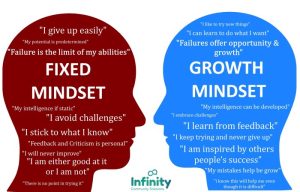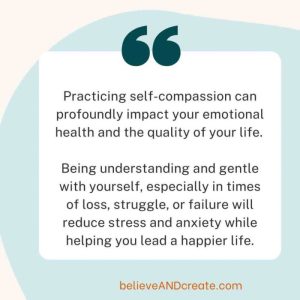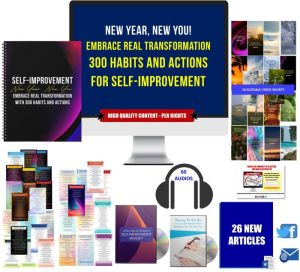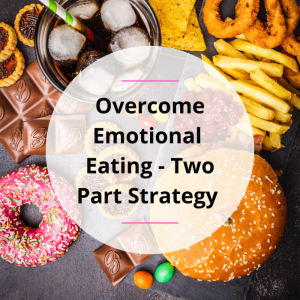How to Bounce Back From Failure
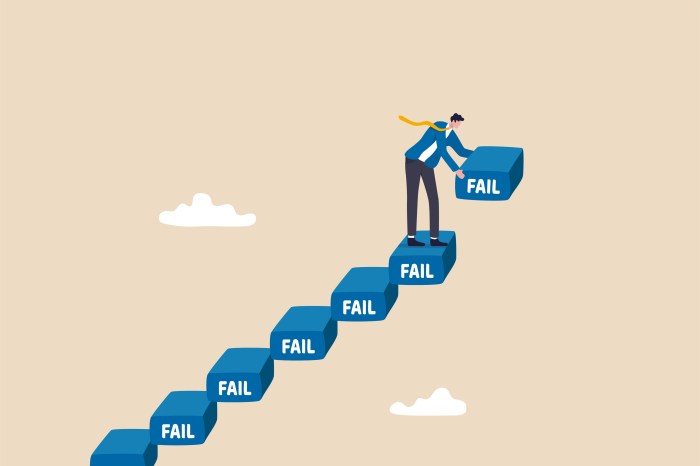
How to bounce back from failure is a journey many undertake. This isn’t just about overcoming setbacks; it’s about transforming challenges into opportunities for growth. We’ll explore practical strategies for navigating the emotional aftermath of failure, identifying root causes, and building resilience to face future obstacles with renewed strength and perspective. Understanding the process allows for a more intentional approach to personal and professional development, fostering a mindset that embraces learning and progress even in the face of adversity.
This guide offers a comprehensive approach, covering emotional processing, goal setting, stress management, and seeking support when needed. We’ll examine various techniques for building self-compassion, managing anxiety, and cultivating mindfulness—essential tools for navigating the complexities of failure and emerging stronger on the other side. Ultimately, the aim is to equip you with the resources and strategies to not only recover from setbacks but to thrive in the face of challenges.
Defining Failure and its Impact
Failure is a subjective experience, its definition varying widely depending on individual perspectives and cultural contexts. What constitutes failure for one person might be a minor setback for another. This variability significantly impacts the psychological effects of perceived failure, ranging from mild disappointment to debilitating self-doubt. Understanding these diverse interpretations is crucial to effectively bouncing back.The psychological impact of failure is multifaceted.
Experiencing failure can trigger negative emotions such as frustration, disappointment, anger, and sadness. More significantly, repeated or perceived major failures can lead to decreased self-esteem, feelings of inadequacy, and even depression. The severity of the impact depends on factors such as the perceived importance of the goal, the individual’s coping mechanisms, and the level of support they receive.
Interpretations of Failure and their Psychological Effects
The interpretation of an event as a “failure” is largely subjective. For example, a student who fails an exam might view it as a complete personal failing, leading to significant distress and self-criticism. Another student might see the same event as a learning opportunity, prompting them to improve their study habits. Similarly, a business venture that doesn’t achieve its initial projections might be deemed a failure by its founders, leading to financial strain and emotional distress.
However, it might be viewed as valuable experience that informed future entrepreneurial endeavors. The difference lies in the individual’s mindset and how they choose to frame the outcome. This cognitive reframing significantly influences the emotional response and subsequent actions.
Examples of Common Failures and their Potential Consequences
Numerous examples illustrate the varied consequences of failure. Failing a driving test can lead to temporary frustration but ultimately motivates further practice and improvement. Losing a job, however, can trigger financial hardship and emotional distress, potentially impacting self-worth and future career prospects. A failed relationship can cause profound sadness and feelings of rejection, requiring time and effort to heal.
The consequences are therefore not solely determined by the event itself but also by the individual’s circumstances, support systems, and coping strategies.
Strategies for Reframing Negative Perceptions of Failure
Reframing failure is a crucial skill for resilience. Instead of viewing failure as a personal shortcoming, it’s helpful to see it as a learning opportunity. Analyzing what went wrong, identifying areas for improvement, and adjusting strategies accordingly can transform a negative experience into a positive catalyst for growth. Focusing on the lessons learned rather than dwelling on the outcome itself can significantly mitigate the negative psychological impact.
Furthermore, seeking support from friends, family, or mentors can provide valuable perspective and emotional support during challenging times. Celebrating small victories along the way, even amidst setbacks, helps maintain motivation and build confidence. This positive reinforcement fosters a growth mindset, making future challenges less daunting.
Identifying the Root Causes of Failure

Understanding why we fail is crucial to bouncing back stronger. This involves a thorough analysis of the contributing factors, both internal and external, that led to the setback. By pinpointing the root causes, we can develop targeted strategies to prevent similar failures in the future and foster personal growth.Identifying the root causes of failure requires a systematic approach.
It’s not simply about acknowledging the outcome but about digging deeper to understand the underlying mechanisms that contributed to it. This process often involves self-reflection, honest assessment, and sometimes, seeking external perspectives.
Internal and External Factors Contributing to Failure
Failures rarely stem from a single cause. Instead, they are often the result of a complex interplay of internal and external factors. Internal factors are those within our control, such as our skills, knowledge, effort, and mindset. External factors are those outside our immediate control, such as market conditions, unexpected events, or the actions of others.For example, a missed project deadline at work could be due to inadequate planning (internal) and unexpected technical difficulties (external).
Similarly, a failed relationship might be caused by poor communication skills (internal) and unforeseen circumstances like a job relocation (external). Recognizing the distinction between these factors helps us to focus our efforts on what we can realistically influence.
Questions to Identify Underlying Causes of Failure
A structured approach to identifying the root causes can be highly effective. Asking specific questions can illuminate the contributing factors.Understanding the specific context of the failure is vital. Consider the following:
- What was the specific goal or objective that wasn’t achieved?
- What were the key steps involved in the process that led to the failure?
- What resources (time, money, people) were available, and were they sufficient?
- What were the initial expectations and how did they compare to the actual outcome?
Analyzing personal contributions is essential for growth. Consider these questions:
- What personal skills or knowledge gaps contributed to the failure?
- Were there any personal biases or assumptions that influenced decisions?
- Was there sufficient effort invested in the task or goal?
- What could I have done differently to improve the outcome?
Finally, examining external influences is also necessary for a complete understanding. Ask yourself:
- Were there any unforeseen circumstances or events that impacted the outcome?
- Were there any external constraints or limitations that hindered progress?
- Did the actions or decisions of others contribute to the failure?
- What external factors could not have been reasonably anticipated or controlled?
By carefully considering these questions, a more comprehensive understanding of the root causes of failure can be achieved, leading to more effective strategies for future success.
Learning from Mistakes and Setting New Goals

Failure, while unpleasant, presents a unique opportunity for growth and development. By analyzing past setbacks and extracting valuable lessons, we can pave the way for future success. This involves a conscious effort to understand the circumstances surrounding the failure, identify areas for improvement, and then translate those insights into concrete, actionable steps. The process of learning from mistakes and setting new goals is iterative, requiring both self-reflection and proactive planning.Learning from mistakes requires a shift in perspective from viewing failure as a personal defeat to seeing it as a valuable learning experience.
It’s about understanding what went wrong, not dwelling on the negative emotions associated with the outcome. This process facilitates future success by preventing similar mistakes and fostering resilience.
Strategies for Extracting Valuable Lessons from Past Experiences
Effectively analyzing past failures involves a structured approach. Simply acknowledging that something went wrong isn’t sufficient; a deeper dive into the specifics is crucial. This involves identifying not just the outcome, but the contributing factors and the decisions that led to the unfavorable result.
- Conduct a thorough post-mortem analysis: This involves systematically reviewing the events leading up to the failure, identifying contributing factors, and assessing the impact of various decisions. Imagine a business launching a new product that failed to meet sales targets. A post-mortem analysis might reveal inadequate market research, poor marketing strategy, or a flawed product design. Each of these aspects should be carefully examined.
- Identify specific areas for improvement: Once the contributing factors are identified, focus on specific areas where changes can be made. In the product launch example, this might involve improving market research techniques, refining the marketing campaign, or redesigning the product based on customer feedback.
- Seek external perspectives: Gaining insights from others who were involved or who have expertise in the relevant area can provide valuable perspectives and identify blind spots in your own analysis. An objective opinion can often highlight issues you may have overlooked.
- Document your learnings: Keeping a record of your failures, the lessons learned, and the actions taken to address them can serve as a valuable reference point for future endeavors. This creates a personal repository of experience and knowledge.
Framework for Setting Realistic and Achievable Goals After Failure
Setting realistic goals after failure is crucial to prevent discouragement and maintain momentum. This requires a clear understanding of your capabilities, resources, and the challenges you may face. Goals should be specific, measurable, achievable, relevant, and time-bound (SMART).
Setting SMART goals helps you stay focused and motivated, and increases your chances of success.
- Start small: After a significant setback, it’s often beneficial to start with smaller, more manageable goals to rebuild confidence and momentum. Instead of aiming for a major accomplishment immediately, focus on achieving a series of smaller victories.
- Break down large goals into smaller steps: Large, overwhelming goals can be daunting. Breaking them down into smaller, more manageable steps makes them less intimidating and provides a sense of accomplishment as each step is completed.
- Set deadlines: Deadlines provide structure and accountability, helping to ensure that progress is made. However, these deadlines should be realistic and achievable, considering your available resources and time constraints.
- Regularly review and adjust your goals: Circumstances change, and it’s important to regularly review and adjust your goals as needed to ensure they remain relevant and achievable.
Building Resilience and Self-Compassion
Failure can be a deeply disheartening experience, leaving us feeling vulnerable and questioning our abilities. However, the path to bouncing back isn’t solely about strategizing and goal-setting; it’s also profoundly influenced by our inner dialogue and our capacity for self-compassion. Developing resilience and self-compassion are crucial for navigating setbacks and emerging stronger. These internal resources act as a buffer against the negative impact of failure, fostering a healthier and more sustainable recovery process.Self-compassion, the act of treating ourselves with kindness and understanding during times of difficulty, is paramount to the recovery process.
Unlike self-esteem, which can fluctuate based on achievements, self-compassion remains a constant source of support, regardless of outcomes. It allows us to acknowledge our imperfections and struggles without resorting to self-criticism, fostering a sense of self-acceptance that is vital for emotional healing and future growth. By embracing self-compassion, we create a safe space for reflection and learning, allowing us to process our emotions effectively and move forward constructively.
Self-Compassionate Statements
Negative self-talk often amplifies the sting of failure. To counteract this, we can consciously replace critical inner voices with self-compassionate statements. These statements acknowledge the pain of failure without assigning blame or judgment. For example, instead of thinking “I’m a complete failure,” try “This is difficult, but it doesn’t define me.” Instead of “I should have done better,” consider “I did the best I could with what I knew at the time.” These reframings shift the focus from self-criticism to self-understanding and acceptance.
Consistent practice in replacing negative self-talk with self-compassionate statements gradually rewires our inner dialogue, promoting a more supportive and resilient mindset.
Cultivating Self-Compassion and Resilience
Several practical exercises can be implemented to cultivate self-compassion and enhance resilience. Mindfulness meditation, for instance, helps us become more aware of our thoughts and emotions without judgment. By observing our internal landscape without getting swept away by negative emotions, we gain distance from self-critical thoughts and create space for self-compassion. Another effective exercise involves writing a letter to ourselves from the perspective of a compassionate friend.
This allows us to offer the same understanding and support we would give a loved one facing a similar challenge. Journaling, specifically focusing on our feelings and lessons learned from the failure, can also facilitate self-reflection and promote emotional processing. Finally, engaging in activities that bring joy and a sense of accomplishment, such as spending time in nature, pursuing hobbies, or connecting with supportive friends and family, helps replenish our emotional reserves and builds resilience over time.
These practices, consistently applied, build a strong foundation for navigating future challenges with greater ease and self-acceptance.
Stress and Anxiety Management
Failure can trigger significant stress and anxiety. It’s crucial to understand that these feelings are normal responses to setbacks, and effectively managing them is vital for bouncing back. Ignoring these feelings can hinder your recovery process, potentially leading to prolonged emotional distress and impacting your ability to set and achieve new goals. Implementing effective stress management techniques is therefore an essential part of the recovery process.
Developing healthy coping mechanisms is key to navigating the emotional aftermath of failure. This involves recognizing the signs of stress and anxiety, and proactively implementing strategies to alleviate these feelings. The techniques Artikeld below can help you regain control and foster a more positive mindset, allowing you to focus on moving forward.
Effective Stress Reduction Techniques
Numerous techniques can help reduce stress and anxiety after a setback. These methods work by altering your physiological response to stress, promoting relaxation, and shifting your mental focus. Consistent practice is essential for maximizing their effectiveness.
Relaxation Techniques
Relaxation techniques are powerful tools for managing stress and anxiety. These techniques help calm your nervous system, reducing the physical symptoms of stress such as rapid heartbeat and muscle tension. Regular practice can significantly improve your ability to cope with stressful situations.
- Deep Breathing: Inhale deeply through your nose, hold for a few seconds, and exhale slowly through your mouth. Focus on the sensation of your breath entering and leaving your body. This simple technique can quickly calm your nervous system.
- Progressive Muscle Relaxation: Tense and release different muscle groups in your body, starting with your toes and working your way up. This helps release physical tension associated with stress.
- Meditation: Find a quiet space, focus on your breath, and allow your thoughts to pass without judgment. Regular meditation can improve your ability to manage stress and enhance self-awareness.
- Mindfulness: Pay attention to the present moment without judgment. Notice your thoughts, feelings, and sensations without getting carried away by them. This can help reduce overthinking and anxiety.
Comparison of Stress Management Strategies, How to bounce back from failure
Different stress management strategies offer varying levels of effectiveness depending on individual needs and preferences. The table below compares several common techniques, highlighting their benefits and potential drawbacks.
| Strategy | Effectiveness | Benefits | Drawbacks |
|---|---|---|---|
| Deep Breathing | High (for immediate relief) | Easy to learn, can be done anywhere, quickly reduces physical symptoms | May not be sufficient for chronic stress |
| Progressive Muscle Relaxation | Moderate to High | Reduces muscle tension, promotes relaxation, improves sleep | Requires dedicated time and practice |
| Meditation | High (with consistent practice) | Reduces stress hormones, improves focus and concentration, enhances emotional regulation | Requires regular practice, may be challenging for beginners |
| Mindfulness | Moderate to High | Increases self-awareness, reduces rumination, improves emotional regulation | Requires practice and commitment, can be difficult to maintain initially |
Recovering from failure isn’t a linear path; it’s a process of learning, adapting, and growing. By understanding the emotional, psychological, and practical aspects of setbacks, you can develop a resilient mindset that allows you to view failure not as an end, but as a valuable stepping stone towards success. Remember that self-compassion, seeking support, and focusing on learning from mistakes are crucial elements in this journey.
Embrace the challenges, learn from your experiences, and continue to move forward with renewed determination and self-belief. Your ability to bounce back is a testament to your strength and capacity for growth.
Top FAQs: How To Bounce Back From Failure
What if I feel overwhelmed by guilt after a failure?
Acknowledge your feelings. Guilt is a normal emotion, but dwelling on it is unproductive. Focus on what you can learn and how to prevent similar situations in the future. Consider talking to a trusted friend or therapist.
How do I know when to seek professional help?
If feelings of sadness, hopelessness, or worthlessness persist for more than two weeks, or if you’re struggling to function daily, it’s crucial to seek professional help from a therapist or counselor.
Can failure actually be beneficial?
Absolutely! Failure often provides valuable lessons and insights that can lead to personal and professional growth. It helps us identify weaknesses, refine strategies, and build resilience.
How can I avoid negative self-talk after a failure?
Challenge negative thoughts by actively replacing them with positive affirmations. Focus on your strengths and past successes. Practice self-compassion and treat yourself with the same kindness you would offer a friend.
